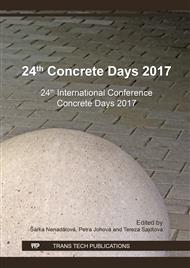p.273
p.280
p.284
p.290
p.299
p.305
p.313
p.319
p.325
Applicability of Commercial Software for Bridge Design with Consideration of Seismic Loading Effects
Abstract:
The construction of bridges with use of seismic isolation is a less-used concept in Slovakia and the Czech Republic. The concept of seismic isolation of bridges is a way of protecting bridge construction without damaging the pillars and substructure unlike the currently used methodology of consideration and development of plastic joints. When using this concept correctly, it is possible to prevent serious damage of construction and greatly reduce economic losses. Creation of a FEM (Fine Element Method) model, that is capable of correct description of the bridge behavior during a seismic event is often problematic. In this paper, the features of designing and modeling of bridge constructions with use of seismic insulation based on elastomeric bearings are presented. Furthermore, the calculations of stiffness constants required for numerical modeling are presented as well. In this paper are described methods of modeling of seismic isolations in a commonly and commercially available FEM based software. The work also contains a comparison of possibilities as well as limits of these programs. We further present recommendations for correct modeling by use of nonlinear material properties or elastic bonds between elements.
Info:
Periodical:
Pages:
313-318
Citation:
Online since:
February 2018
Authors:
Keywords:
Price:
Сopyright:
© 2018 Trans Tech Publications Ltd. All Rights Reserved
Share:
Citation:


